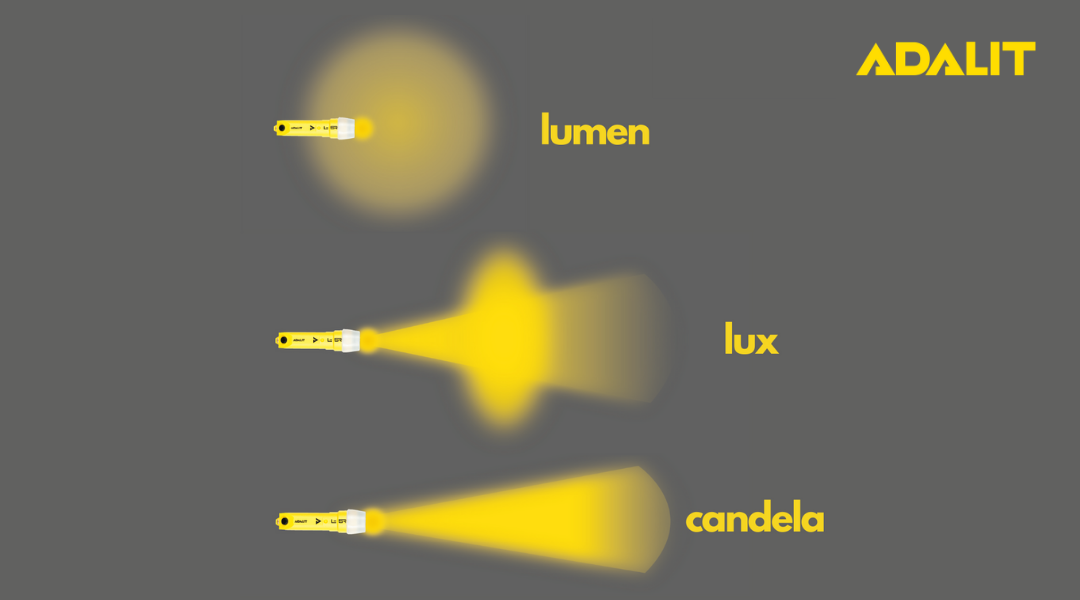Based on three specific aspects to measure light according to the International System of Units, and the beam distance, we can make comparisons between models of flashlights and decipher what kind of light we will get.
Lumen (Lm): is the unit for measuring the luminous flux emitted by a light source, that is, the total amount of visible light emitted by a source. Lumens do not take into account the angle of light emission. And luminous flux is defined as the power (W) emitted in the form of luminous radiation to which the human eye is sensitive.
Candela (Cd): is the unit that measures the luminous intensity, which is defined as the luminous flux emitted per solid angle unit in a given direction. One candle equals 1 lumen per stereoradian (lm/sr). It is the equivalent of measuring the amount of light in a particular direction, so it is related to the angle of aperture of the light beam.
Lux (Lx): is the unit for measuring the level of illumination or illuminance, that is, it measures the flow of light projected by a source on a surface at a distance. Lux must be accompanied by the distance at which they are measured (e.g., Lux at 1m, to 5m, etc.). A lux is equivalent to a lumen/m2.
Lux vs Lumen: the difference between lux and lumen is that lux takes into account the surface over which the luminous flux is distributed.
Beam distance: the distance of the beam when the brightness of the light reaches .25 Lux (the equivalent of the light from a full moon). It is given in meters.





